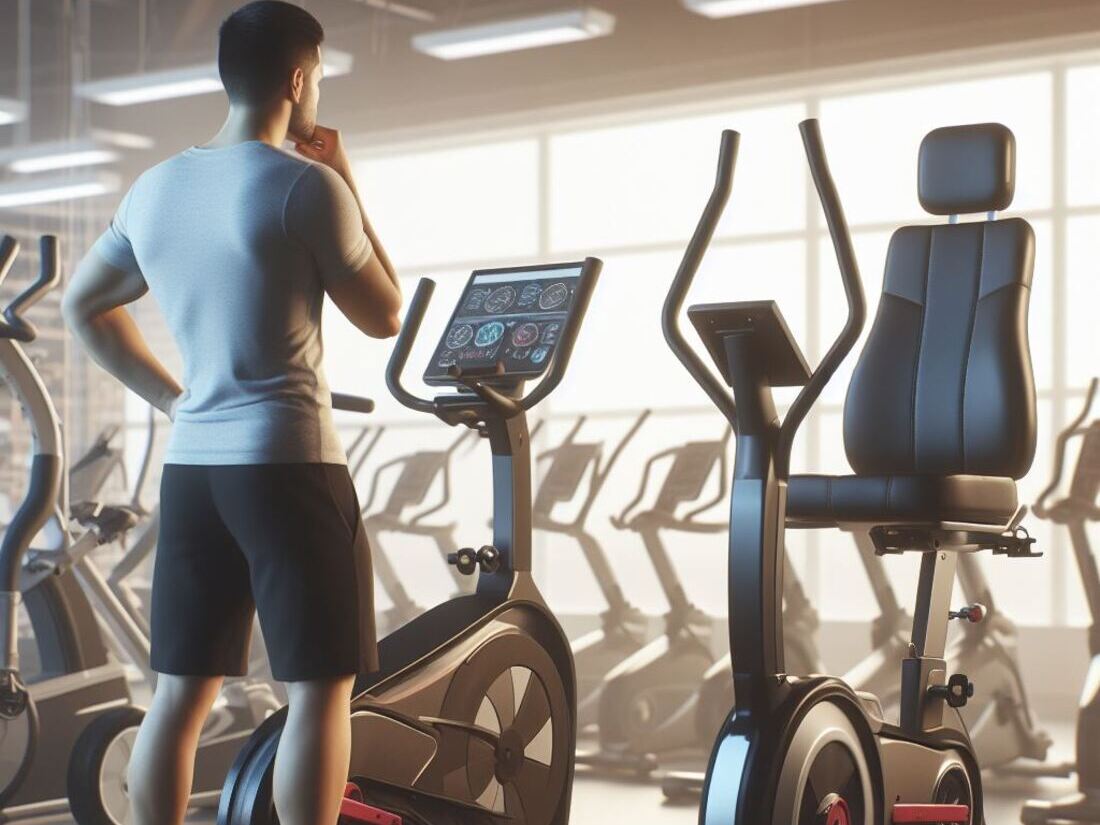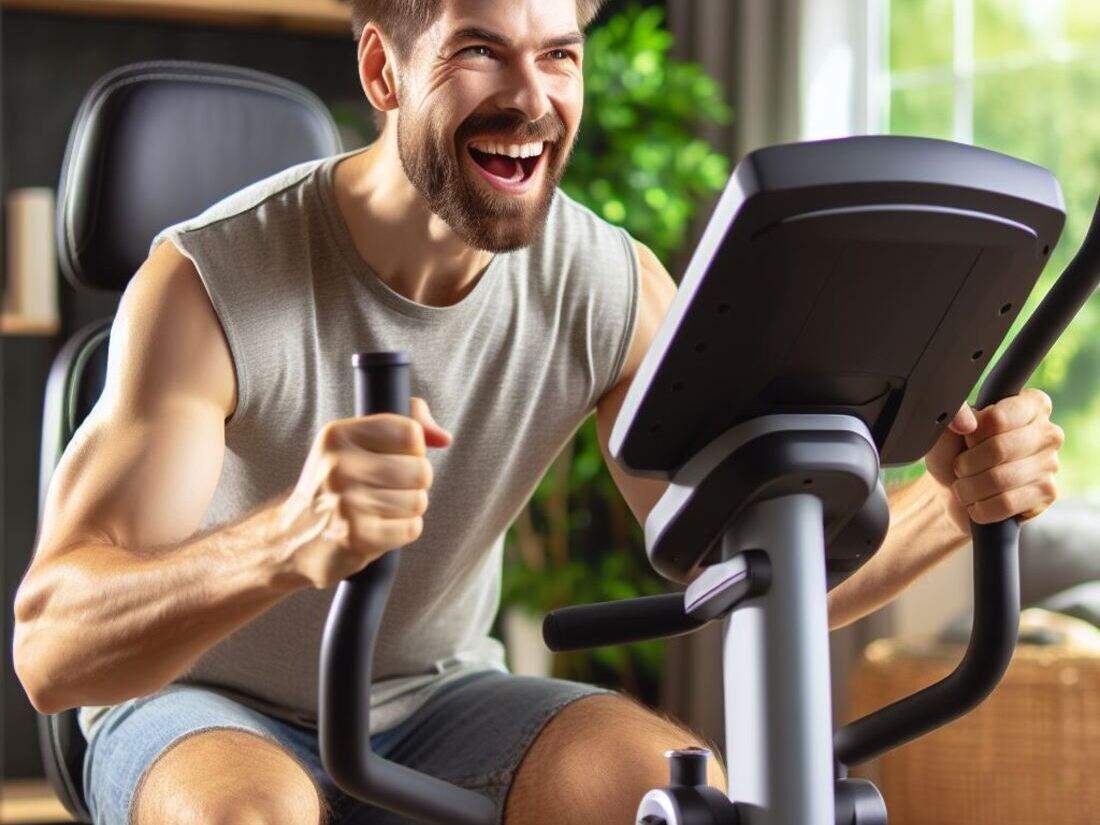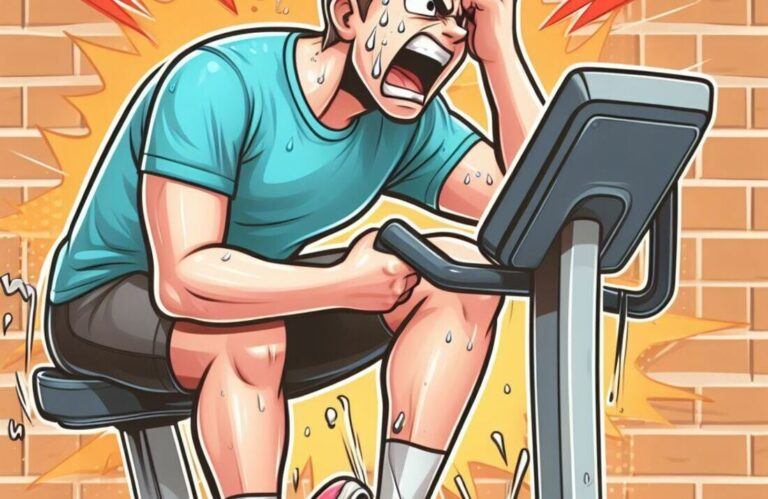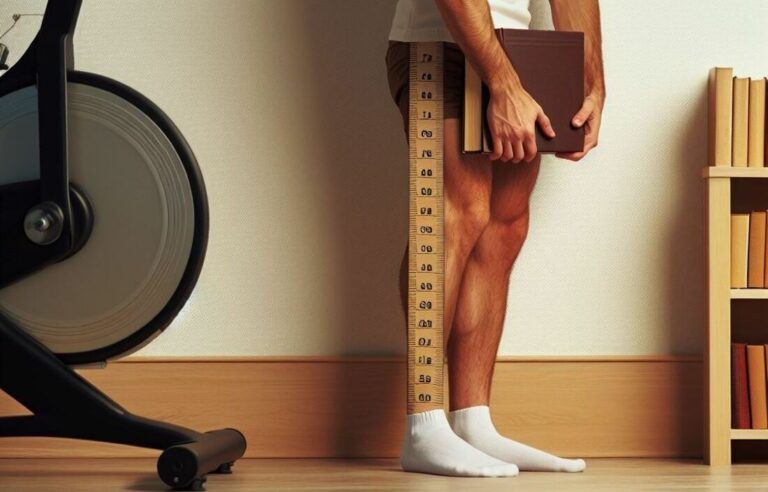Ever feel the envious pang as you watch cyclists whiz by in sleek gear, conquering hills and leaving you wondering if a traditional bike is the only path to a good workout?
Then you discover recumbent bikes –– these comfortable exercise machines with reclined seating that seem almost too good to be true.
But can you really get a challenging workout with a recumbent bike?

The answer might surprise you!
Here’s the truth: Recumbent bikes offer a fantastic low-impact exercise option that delivers a surprisingly effective workout, making them ideal for people of all fitness levels.
This blog debunks common myths surrounding recumbent bikes and explores the many benefits they offer for fitness enthusiasts.
Key Takeaways
- Recumbent bikes provide a low-impact workout that’s gentle on your joints.
- They offer customizable resistance levels for a challenging workout experience.
- Recumbent bikes engage various muscle groups, strengthening your lower body, core, and upper body.
- The comfortable, reclined seat allows for longer workouts without back pain or discomfort.
Myth vs. Reality: Recumbent Bike Workout Edition

| Myth | Reality |
|---|---|
| Recumbent bikes aren’t intense enough for a good workout. | With adjustable resistance levels, you can tailor your workout to your fitness level, pushing yourself for a challenging and calorie-burning session. |
| They only work your legs. | Recumbent bikes engage multiple muscle groups. Pedaling strengthens your legs and core, while handlebars allow for arm exercises and upper body engagement through proper posture and core activation. |
| They’re uncomfortable for long rides. | The reclined seat design promotes better posture and reduces back pain, allowing for longer, more comfortable workouts. |
| Recumbent bikes are only for seniors or people with limitations. | Recumbent bikes benefit people of all ages and fitness levels, including those recovering from injuries, dealing with back pain, or simply seeking a comfortable yet effective workout option. |
Supercharge Your Fitness Journey with Recumbent Bikes
While traditional upright bikes may offer a more intense cardio experience that simulates outdoor cycling, recumbent bikes boast unique advantages that cater to a wider range of fitness needs and abilities:
- Low-Impact Exercise: The reclined position minimizes stress on your joints, making them perfect for individuals with knee pain, injuries, or joint concerns. This allows you to exercise consistently without the worry of aggravating existing conditions.
- Increased Comfort: The supportive seat backrest allows for longer workouts without back strain or discomfort. The reclined position also takes pressure off your lower back, promoting better posture and reducing muscle tension throughout your core and shoulders.
- Improved Stability: The reclined position provides enhanced stability, making them ideal for those with balance concerns or those new to exercise. This allows you to build confidence and focus on your workout without worrying about maintaining balance.
- Cardiovascular Benefits: Recumbent bikes effectively elevate your heart rate and improve cardiovascular health. Studies have shown that recumbent bikes can provide a similar cardiovascular workout to upright bikes at comparable intensities.
- Muscle Engagement: They engage various muscle groups, including your legs, core, and upper body, depending on your workout style. While not a primary muscle-building tool, recumbent bikes can strengthen and tone your legs through pedaling, your core through maintaining proper posture and stability, and your upper body through arm movements on the handlebars.
Finding the Perfect Recumbent Bike for You
Before diving headfirst into the world of recumbent bikes, consider these factors to ensure you find the perfect fit:
- Resistance Levels: Choose a bike with adjustable resistance levels to accommodate your fitness level and workout goals. This allows you to progress gradually and challenge yourself as you get stronger.
- Seat Comfort: Prioritize a well-padded, adjustable seat with good lumbar support for optimal comfort during long rides. A comfortable seat is crucial for preventing discomfort and allowing you to enjoy extended workouts.
- Handlebar Design: Look for ergonomically designed handlebars that promote proper posture and reduce strain on your back and shoulders. Consider handlebars with multiple grip positions to accommodate different riding styles and target different muscle groups in your upper body.
- Weight Capacity: Ensure the bike’s weight capacity accommodates your weight comfortably. This is an important safety factor to consider.
- Warranty: Consider the warranty length and coverage for peace of mind. A good warranty provides protection against potential manufacturing defects and ensures you get the most out of your investment.
FAQs: Recumbent Bikes and Effective Workouts
- Q: Can I lose weight with a recumbent bike?
- A: Absolutely! Recumbent bikes provide a great way to burn calories and contribute to weight loss, especially when combined with a healthy diet. By incorporating regular recumbent bike workouts into your routine, you can increase your calorie expenditure and promote weight management.
- Q: How long should I use a recumbent bike for an effective workout?
- A: The optimal workout duration depends on your fitness level and goals. Beginners can start with 15-20 minutes of moderate-intensity exercise and gradually increase the duration and intensity as your fitness improves. Aim for at least 30 minutes of moderate-intensity exercise most days of the week for optimal health benefits.
- Q: Are recumbent bikes boring?
- A: Not necessarily! Many recumbent bikes offer built-in entertainment options like LCD consoles with TV or music capabilities. You can also listen to your favorite music or podcasts while riding. Additionally, consider incorporating interval training into your routine for added variety and challenge. Alternate between high-intensity and low-intensity periods to keep your workout engaging and burn more calories.
- Q: What if I have back pain? Can I still use a recumbent bike?
- A: Recumbent bikes can be a great option for individuals with back pain due to the reduced stress on the spine. The reclined position helps maintain proper posture and minimizes pressure on your lower back. However, consulting with a healthcare professional before starting any new exercise program is crucial, especially if you have a pre-existing back condition. They can advise you on proper form and ensure the exercise is safe and appropriate for your specific needs.
Embrace the Ride: Reap the Benefits of Recumbent Bike Workouts

Recumbent bikes offer a fantastic low-impact exercise solution for people of all ages and fitness levels.
By debunking common myths and highlighting their unique advantages, this blog empowers you to make informed choices about your fitness journey.
So, ditch the misconceptions and hop on a recumbent bike!
Experience the comfort, low-impact benefits, and surprising intensity that these versatile exercise machines offer.
Remember, consistency is key!
With regular workouts, you can achieve your fitness goals, improve cardiovascular health, and enjoy a pain-free ride towards a healthier you.
Ready to explore the world of recumbent bikes?
Check out our reviews of top-rated recumbent bikes for different needs and budgets.
Find the perfect fit for your fitness journey and start reaping the benefits of a comfortable, effective workout today!
Citations
- COMPARISON OF TRUNK AND LOWER EXTREMITY MUSCLE ACTIVITY AMONG FOUR STATIONARY EQUIPMENT DEVICES: UPRIGHT BIKE, RECUMBENT BIKE, TREADMILL, AND ELLIPTIGO®
- Aerobic Exercise Benefits Patients with Parkinson’s Disease



